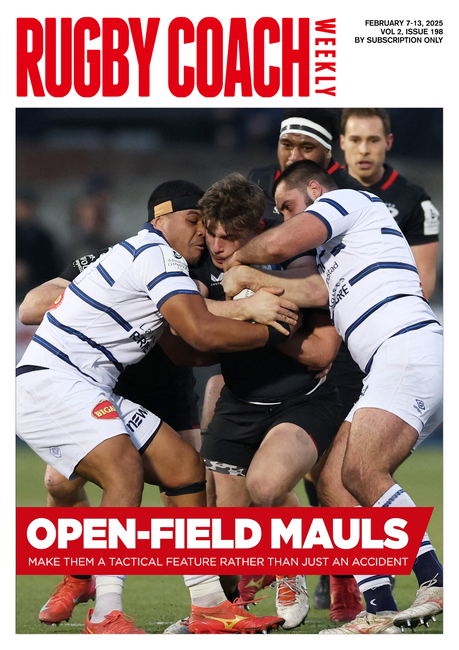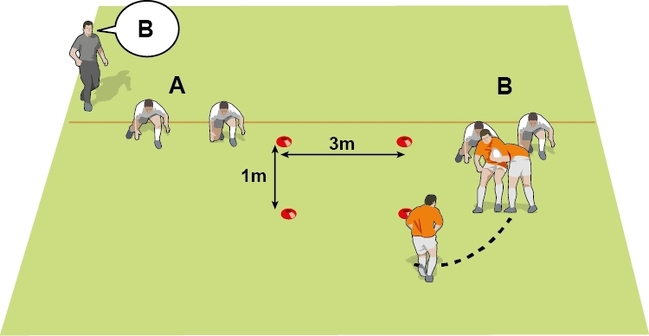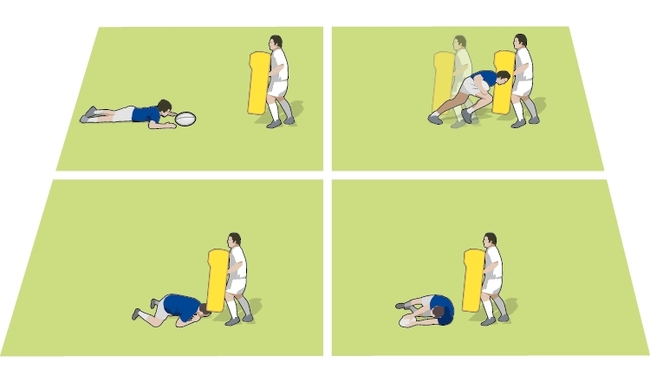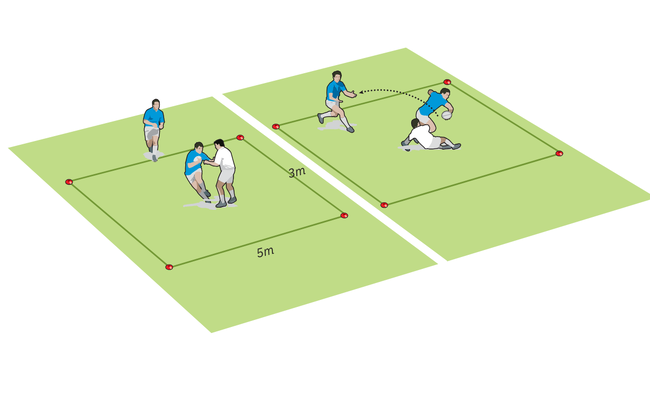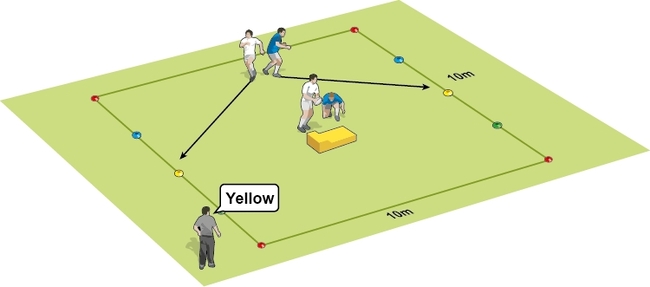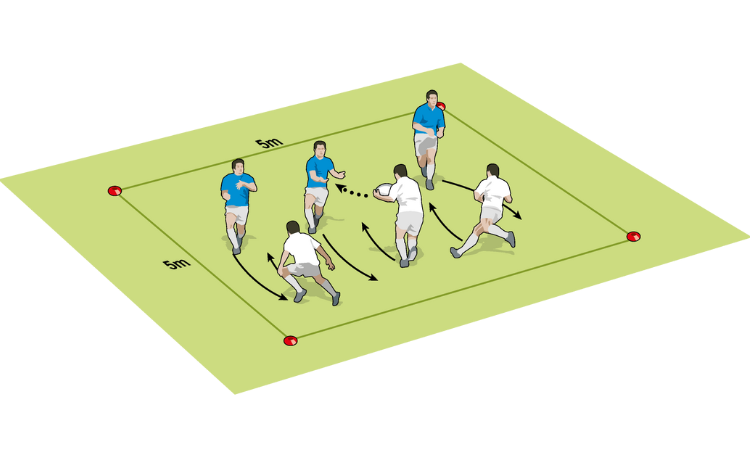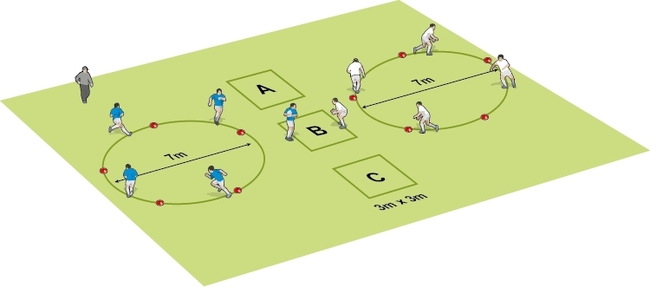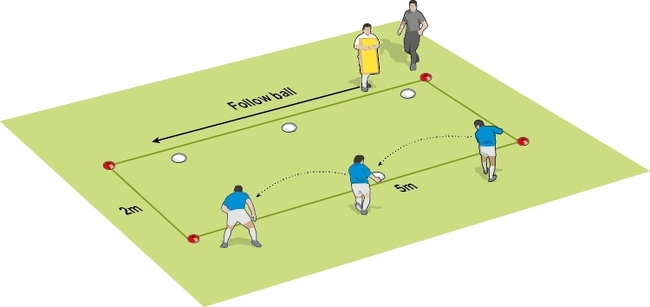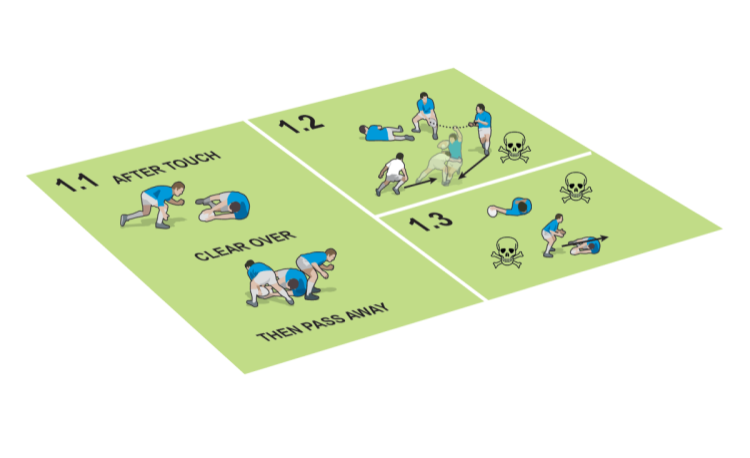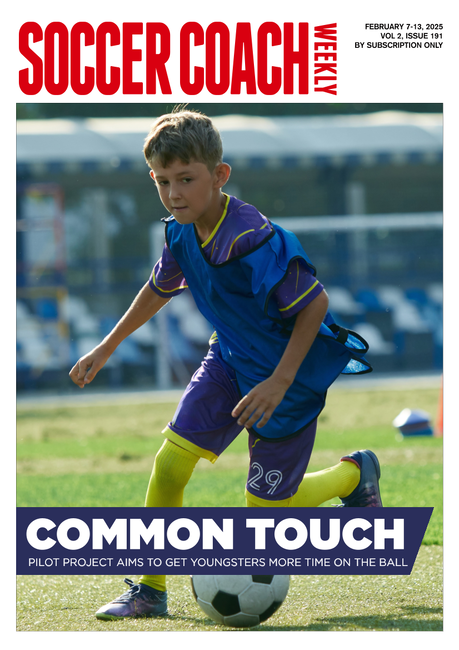Rugby coaching tips for attacking from the ruck
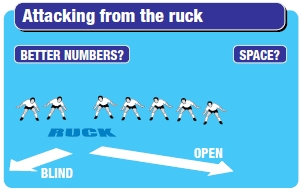
Attacking the blindside
When your players identify they are going to attack the blindside, they need to pass the ball very flat and close to the gain line. The deeper they stand, the more chance there is that the opposition defence can track back and push the attack into touch.
Only use miss passes if the ball is going to a player with no one in front of them. Normally, though, quick passes where the passer has fixed their opposite number should suffice.
Setting up the blindside
Here are two ways to set up a blindside from a ruck:
1. From a kick off reception:
The receiver or the runner off the first receiver, runs infield immediately. Team mates will recognise this is going to happen, and support the runner so a quick ruck can be formed if there is no breakthrough.
Opposition forwards will generally shift towards the ball carrier, leaving only a wing on the blindside. If executed quickly, then there is a good chance the opposition will not react in time, allowing a blindside attack.
2. From lineouts:
Attack through the centre of the defence from a ball "off the top" (straight from the lineout receiver to the scrum half). As lineout forwards from both sides move in to contest the ruck, a possible blindside overload will be created. This works even better from a shortened lineout.
Attacking the openside
When the space is wide out, the ball needs to move to this area without the defence cutting down the outside players. There are three ways to avoid this:
1. Deep passing:
All the players stand further back from the gain line than normal.
2. The "block":
A miss pass is used to get the ball wide, but the missed player runs in front of the pass, momentarily holding the defence.
3. Dummy switches:
Used to hold the defence and prevent them drifting across. A dummy switch or cut pass can have the effect of "interesting" inside defenders.
Remind the ball carrier to hide the ball from the opposition in the action of the dummy switch and the dummy runner to convince the opposition they are going to take the ball.
Player communication is key
The scrum half is unlikely to be able to assess whether to attack the blindside or not, so he will rely on a call from the fly half (stand off).
Normally a pre-arranged call will help. For instance "yes" to go left, "no" to go right.
The blindside wing or full back should have a call to tell the scrum half there is a numbers advantage. For instance, "red, red, red".
Get more rugby coaching drills for rucking by ordering a copy of The Ruck and How to Win It.
Click the link for rugby coaching tips on the role of the blindside flanker.
Newsletter Sign Up
Coaches Testimonials

Gerald Kearney, Downtown Las Vegas Soccer Club

Paul Butler, Florida, USA

Rick Shields, Springboro, USA

Tony Green, Pierrefonds Titans, Quebec, Canada
Subscribe Today
Be a more effective, more successful rugby coach
In a recent survey 89% of subscribers said Rugby Coach Weekly makes them more confident, 91% said Rugby Coach Weekly makes them a more effective coach and 93% said Rugby Coach Weekly makes them more inspired.
Get Weekly Inspiration
All the latest techniques and approaches
Rugby Coach Weekly offers proven and easy to use rugby drills, coaching sessions, practice plans, small-sided games, warm-ups, training tips and advice.
We've been at the cutting edge of rugby coaching since we launched in 2005, creating resources for the grassroots youth coach, following best practice from around the world and insights from the professional game.


